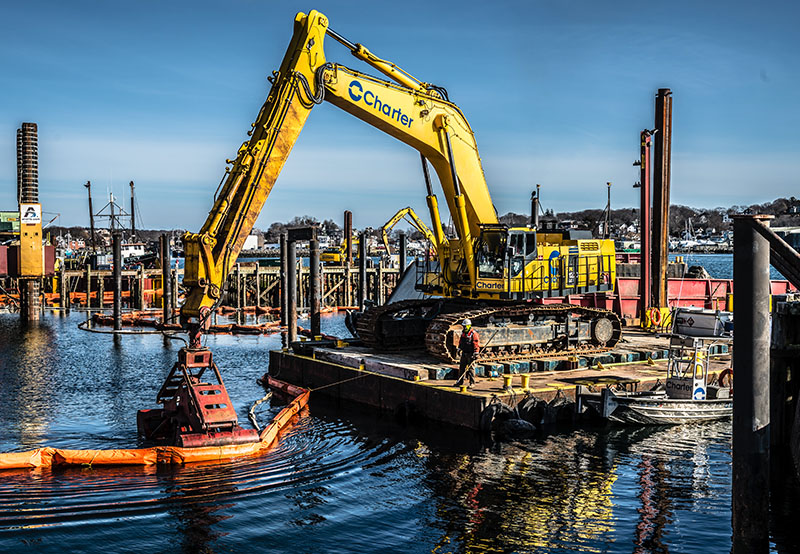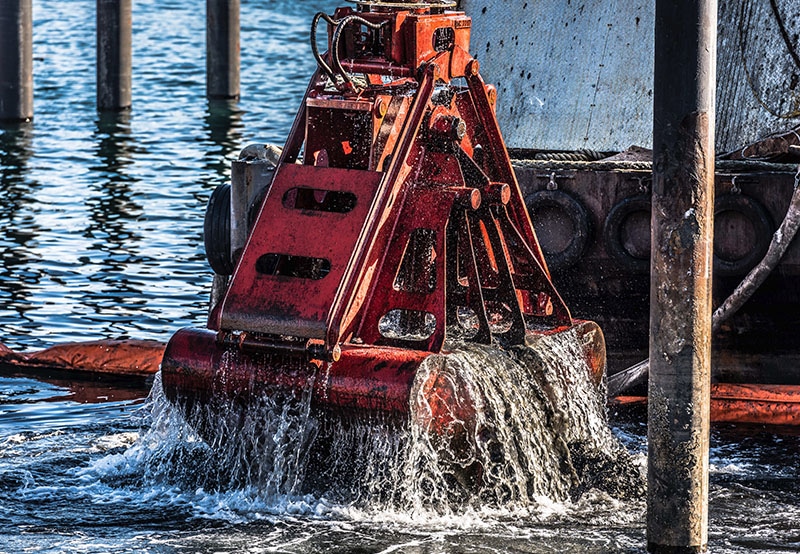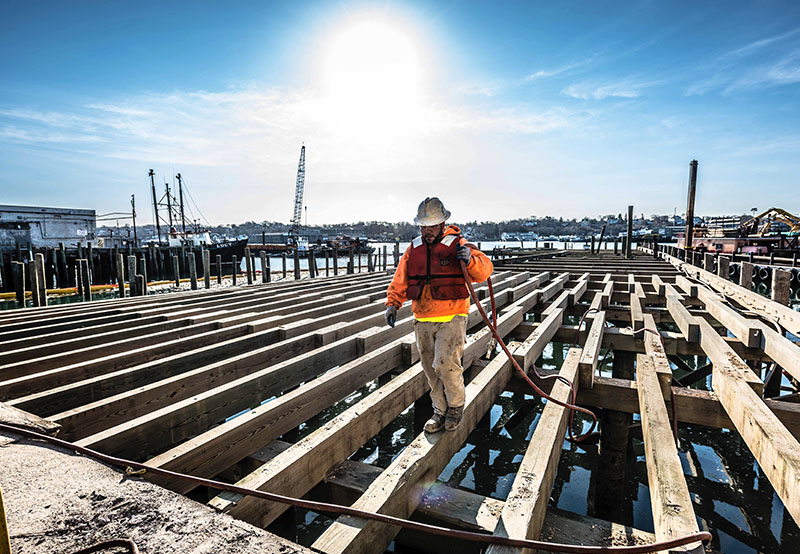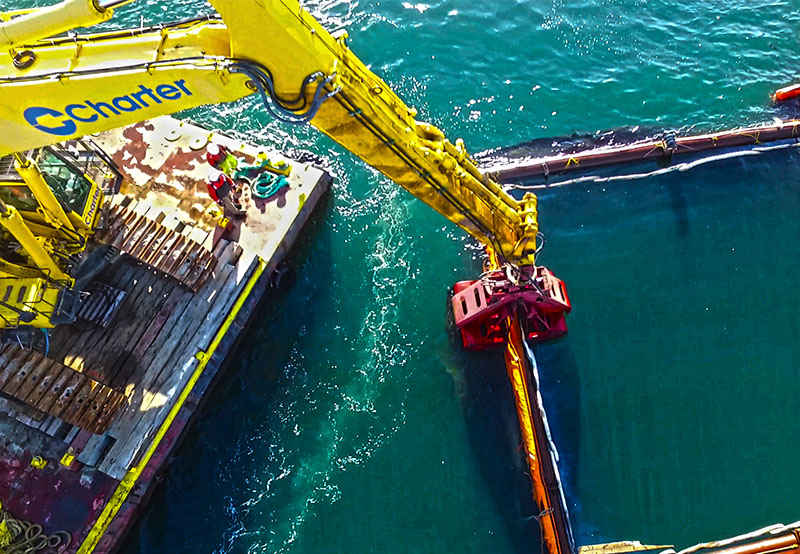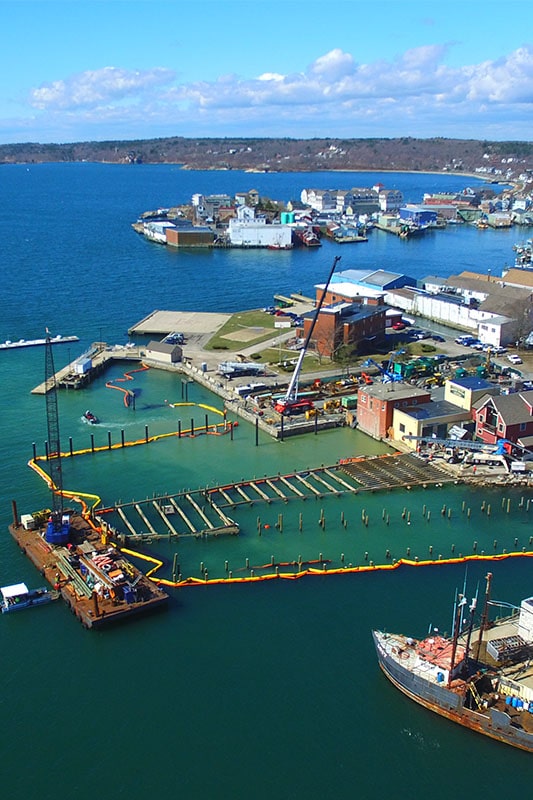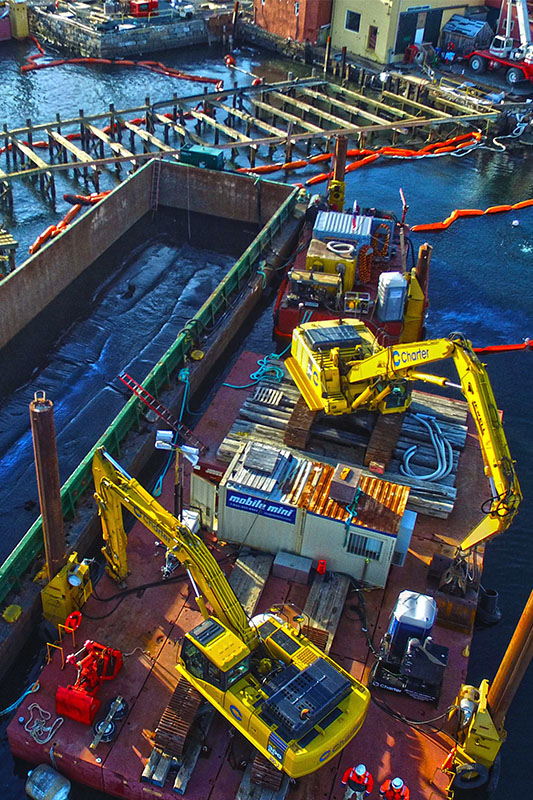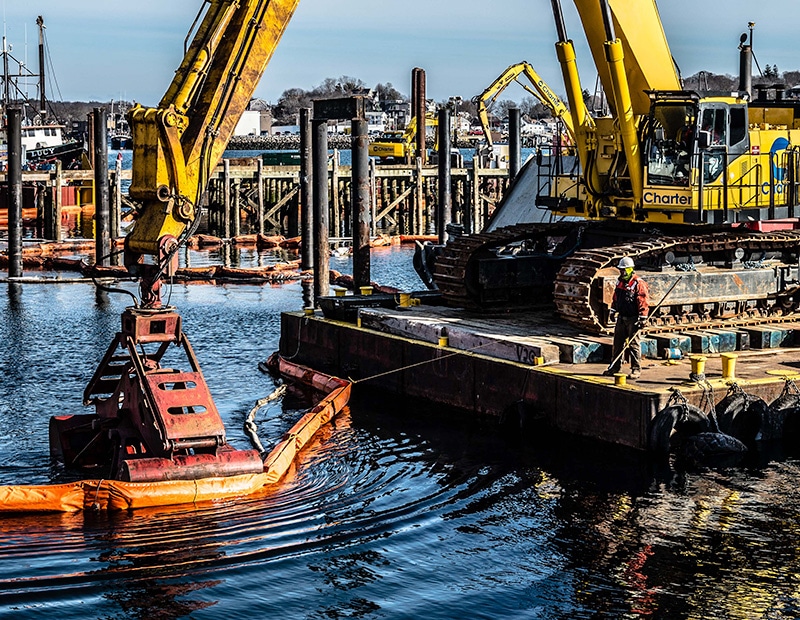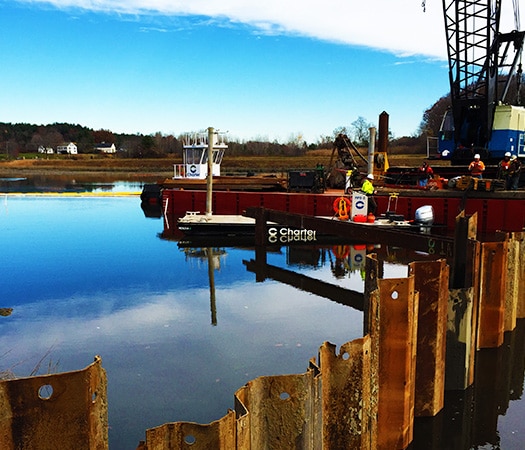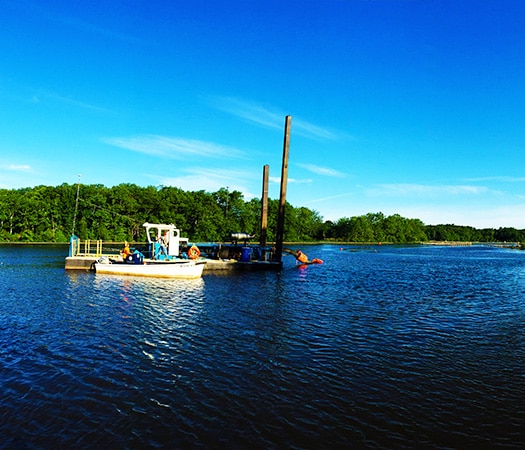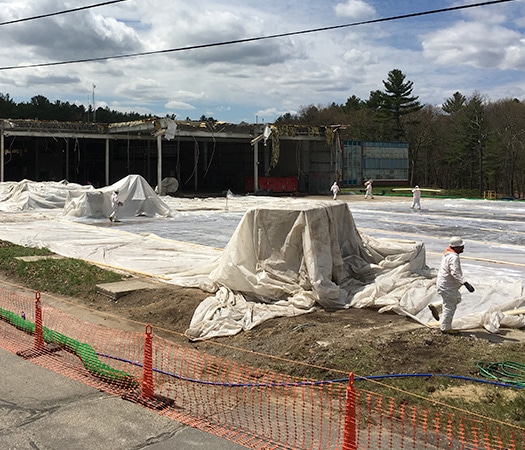- National Grid
- National Grid
- Commercial
- Gloucester, MA
Charter was the prime contractor for this multi-million dollar, multi-year, highly complex project for National Grid that was executed in an active, congested, industrial and commercial waterfront in Gloucester, MA. The work was performed entirely along the historic waterfront at Harbor Loop and encompassed an upland and nearshore area, and an offshore area extending across approximately 12 acres. In the late 1850’s Gloucester Gas Light Company (GGLC) had operated a Manufactured Gas Plant (MGP) along the Gloucester waterfront for nearly 100 years. The operations left behind waste products such as tars, sludges, and oils that contaminated the waterfront.
The Gloucester project is one of the most complex and sequenced projects Charter has undertaken. The project site is a compact area along Gloucester’s active Inner Harbor and sits on four different properties owned by National Grid, the US Coast Guard, City of Gloucester, and Maritime Gloucester Museum. Charter began work on the project in 2015 and over the course of multiple construction seasons completed dredging, capping, dewatering, transportation, and reconstruction of the historic waterfront infrastructure.
Back to all
